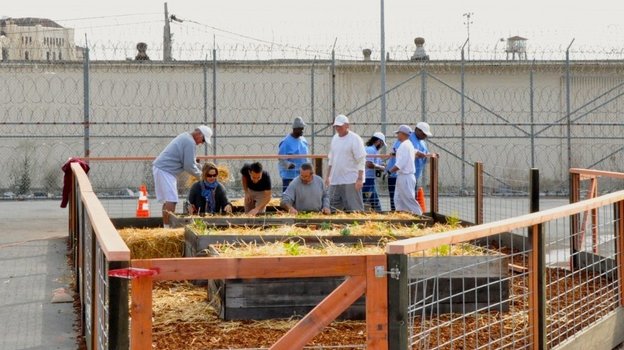
Post by Eliza Barclay, The Salt at NPR Food (1/12/14)
Last week, we reported on the correctional industry's enduring practice of punishing certain inmates with a bland, lumpish food known as "the loaf."
Fortunately, there are also more encouraging stories to tell about prison food.
It turns out there's a pretty vibrant movement of prison vegetable gardens across the country that provide inmates with satisfying work, marketable skills and fresh food to eat. From Connecticut to Minnesota to California, correctional authorities are finding all kinds of reasons to encourage inmates to produce their own food inside the walls.
Recently, we got a rare glimpse behind those walls — of those gardens — at the San Quentin State Prison outside San Francisco, thanks to this video from Planting Justice. The Bay Area group works with less-advantaged communities on food by building gardens and creating jobs in urban food production.